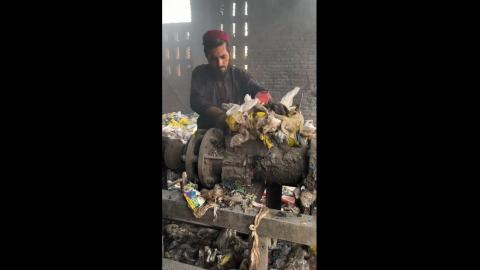The UK'S CHEAPEST RESTAURANT - 3 COURSES FOR £4 - See Pinned Comment.
2
0
27 vistas
Publicado en 17 Nov 2024 / En
Cine y Animación
Mostrar más
0



 Billy Von Bomb
Billy Von Bomb
 Life_N_Times_of_Shane_T_Hanson
Life_N_Times_of_Shane_T_Hanson
 AgentofSocialMediaChaos
AgentofSocialMediaChaos


 GANG_STALKING_AUSTRLIA
GANG_STALKING_AUSTRLIA
 KEEPER
KEEPER

 Gonzo Og
Gonzo Og





 TheRareBreedTheory
TheRareBreedTheory
 WMHarrison94
WMHarrison94





Log in to comment
How and when did the UK currency "pounds" come about and how? And when and why was the abbreviation of (the pound symbol) $ and lbs made?
### The Origins of the British Pound
The **British pound** (symbol: £), also known as **pound sterling**, is one of the world's oldest currencies still in use today. It traces its origins back to **Anglo-Saxon England** around the year **775 AD**.
#### How did the pound come about?
The term "pound" originates from the Latin word **"libra"**, which referred to a pound weight. The currency itself was originally based on a pound of silver. In the early medieval period, **King Offa of Mercia** (c. 757–796 AD) introduced a coinage system where 240 silver pennies were equal to one pound of silver. This system of 240 pennies to a pound was maintained for centuries and forms the basis for the British monetary system even today.
By the **13th century**, during the reign of King Henry III, the **pound sterling** became a well-established unit of currency, named "sterling" after the **silver pennies** (which were known as “sterlings”) that were used to make up the pound.
Over the centuries, the pound remained relatively stable, with silver coins being minted until the 18th century, when **banknotes** began to take over for higher denominations. The British pound has undergone significant changes since its inception, including decimalization in 1971, when the pound was divided into 100 new pence (replacing the old system where a pound was divided into 20 shillings, each containing 12 pennies).
### The Use of the Pound Symbol (£)
The symbol for the British pound (£) has an interesting history. The pound sign, **£**, is thought to be derived from the letter **"L"** (for **libra**, the Latin word for pound) crossed through with one or two lines. The use of this symbol to represent the pound is believed to date back to the late 18th century, around the time when banknotes began to be commonly used for higher values of currency.
There are several theories about how the symbol evolved:
- One theory suggests that the **"L"** for **libra** was written with a horizontal line through it to signify the use of the currency as a measure of weight (a reference to the pound's origins as a unit of weight).
- Another theory posits that the symbol evolved from the British abbreviation for "libra" which was written as **"lb"**, and with the lines added for clarity, the abbreviation became stylized into the pound symbol (£).
The pound symbol as we know it today became more widely used in the 19th century, especially with the rise of printing technology and the standardization of currency symbols.
### The Abbreviation "$" and "lbs"
#### "$" for Dollars:
The dollar sign **"$"** is actually a symbol used for several currencies, most notably the U.S. dollar. The exact origins of the "$" are somewhat debated, but the most widely accepted theory is that it evolved from the **Spanish peso** (pieces of eight) or **Spanish dollar**. In the 16th century, Spain issued large silver coins known as **pieces of eight**, which were widely used throughout the Americas. The abbreviation for the peso in Spanish was **"ps"**, and over time, the letters **"p"** and **"s"** became superimposed and stylized into the "$" symbol.
There are also alternative theories that the "$" originated from the abbreviation of the **U.S. dollar** or other early forms of the currency, but the connection to the Spanish peso remains the most commonly accepted.
The use of the "$" symbol became more prominent in the United States during the **late 18th century**, particularly after the establishment of the U.S. dollar as the national currency in 1792.
#### "lbs" for Pounds (Weight):
The abbreviation "lbs" for pounds (as in weight) comes from the Latin word **"libra"** (the unit of weight), which is the same root as the British pound currency. **Libra** was the unit of measurement used in Roman times, and when English-speaking people began to use the pound as a unit of weight, they continued to use the Latin abbreviation **"lb"**. The "s" was added later, likely to indicate the plural form (pounds), though this is not strictly necessary in English, as **"lb"** is already plural.
### Summary Timeline
- **775 AD**: The British pound begins as a unit of silver currency, originally based on a pound of silver.
- **13th Century**: Pound sterling becomes the standard unit of currency in England.
- **Late 18th Century**: The pound symbol (£) evolves from the Latin word "libra."
- **Late 18th Century**: The dollar sign ($) emerges, possibly derived from the Spanish peso (pieces of eight).
- **18th Century**: The abbreviation "lbs" for pounds (weight) is used, derived from the Latin "libra."
Thus, the British pound has a rich history that dates back over a millennium, while the symbols "$" and "lbs" each have roots in Latin and the practical needs of currency and measurement.
Basically this is a food kitchen